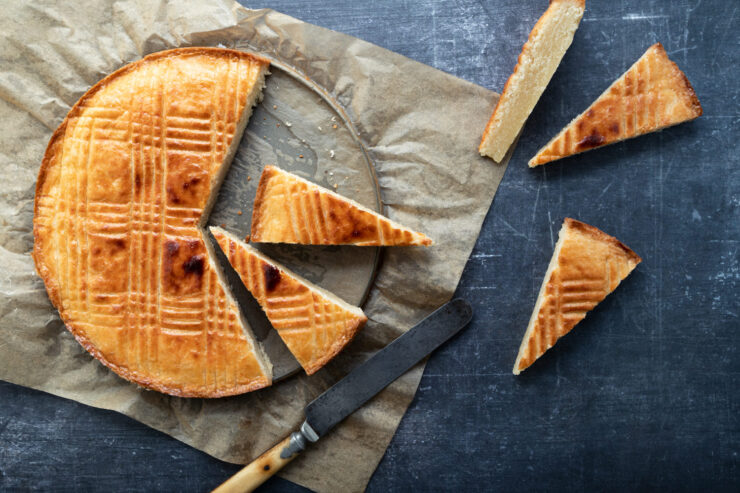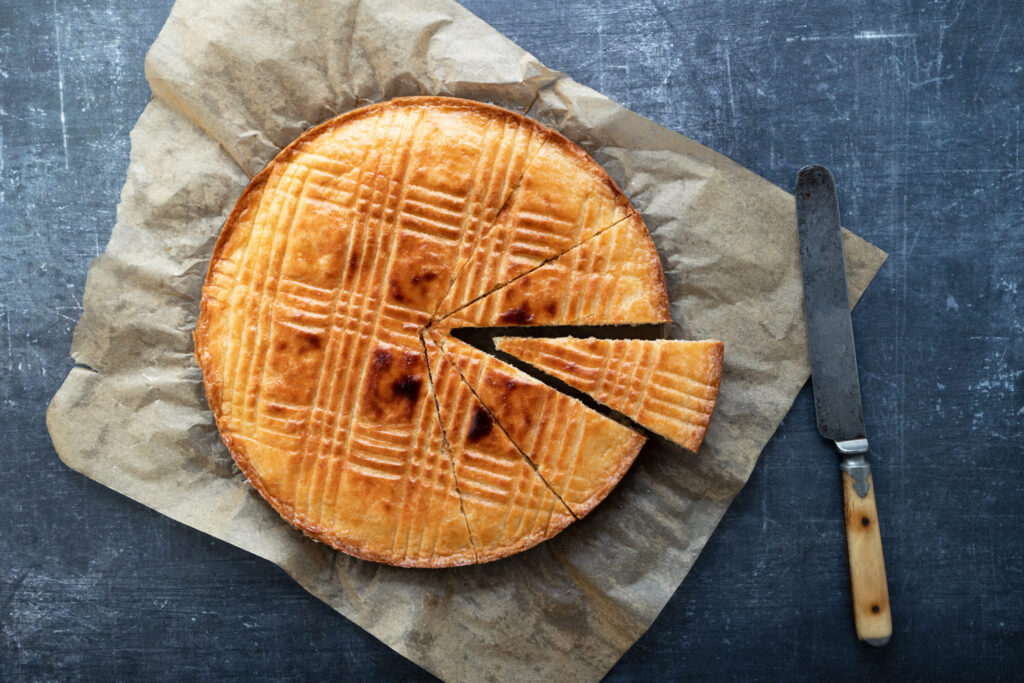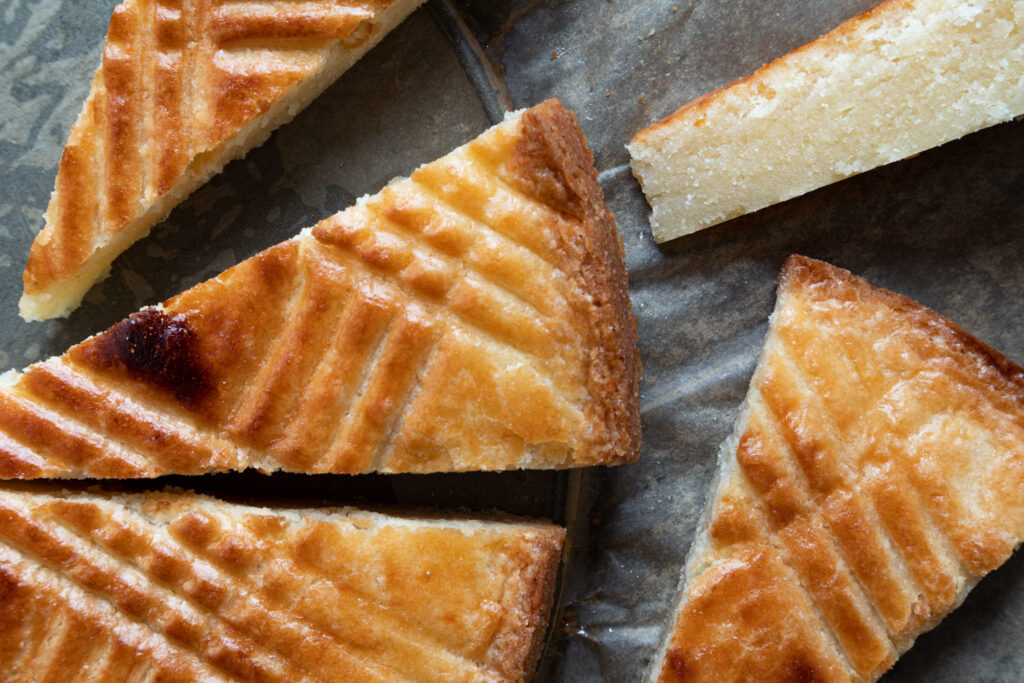
Boterkoek, or Dutch butter cake, is a toothsome snacking cake and classic of Dutch cuisine. With almost as much butter as flour, Dutch butter cake is rich and dense. It’s closer to a large cookie than a cake, but then the Dutch word for cookie, koekje, also means little cake. The top of the cake, humbly adorned with a crosshatch pattern, gets crisp and shiny in the oven. It’s almost like an oversized sablé breton, but soft and tender in the middle.
Boterkoek is a homey classic for op de koffie gaan, or having coffee with family or friends. It’s easy to make for guests, even unexpected ones. (Though if you are unexpected, be sure to depart by 5pm so you don’t worry your Dutch hosts about dinner too).
Boterkoek’s Origin:
Not much information can be found about the origin or history of boterkoek. It seems that it was originally a Dutch-Jewish cake, with the Jewish versions often including candied ginger.
Buttercake is so entrenched in Dutch culture that it has its own special boterkoekvorm, or butter cake pan. It’s a shallow cake pan with a rotating slider that helps release the boterkoek from the pan. But you also can just use a round springform pan or cake pan.

How to Make Boterkoek:
- Dutch butter cake is a straightforward cake, mainly featuring as the name suggests, butter. It can be left plain, or flavored with vanilla extract, almond extract, lemon or orange zest.
- Boterkoek starts by creaming together the butter and sugar until light and fluffy. The butter should be softened to room temperature first, ensuring it aerates properly and dissolves the sugar.
- Add the room temperature egg and vanilla extract or other flavoring and beat until it emulsifies completely.
- Finally, gently stir in the flour and salt, mixing on low just until the dough comes together. It will be thick like sugar cookie dough.
- Press the dough into the greased baking tin. Use a spare piece of parchment paper or some plastic wrap over the top of the batter so it doesn’t stick to your hands.
- You know the boterkoek is done when the top starts to color, the edges are golden, and a wooden pick inserted in the center comes out clean. The texture should be soft, but baked through, with crisp-chewy edges, almost like a blondie.
- When it cools, cut the boterkoek into small squares or narrow wedges. It’s dense and hearty and you really won’t regret portioning one modest indulgence at a time.

Ingredients:
200g sugar
1 large egg, room temperature
1 teaspoon vanilla extract
285g plain flour
1/4 teaspoon salt
EGG WASH:
1 large egg
1 teaspoon water
1 cup sugar
1 large egg, room temperature
1 teaspoon vanilla extract
2 1/3 cups all-purpose flour
1/4 teaspoon salt
EGG WASH:
1 large egg
1 teaspoon water
1. Preheat the oven:
Preheat the oven to 175°C (350°F). Butter and flour a 9-inch (24cm) springform pan and line the bottom with parchment paper.
2. Cream the butter and sugar:
Beat together the butter and sugar with an electric mixer on medium-high speed, about 2 minutes, or until light and fluffy.
3. Add the egg and vanilla:
Add the egg and mix on medium until well combined.
4. Mix in the flour:
Add the flour and salt and mix on low speed until just combined. The dough will be thick like cookie dough.
5. Add to the prepared pan:
Transfer the dough to the prepared pan. Cover the dough with a piece of parchment paper or plastic wrap so that it doesn’t stick to your hand while you use your palm to press the dough, spreading it evenly to the edges of the pan.
6. Brush with egg wash:
Beat the egg with the teaspoon of water in a small bowl to make an egg wash. Brush the top of the cake lightly with the egg wash. Make a crosshatch pattern over the surface of the dough using the tines of a fork.
7. Bake:
Bake the boterkoek in the preheated oven until lightly golden brown and a wooden pick inserted in the center comes out clean, about 30 minutes.

Made this boterkoek last week. Brought back happy memories. Your instructions accompanied by explanations are very clear and helpful; the additional cultural and historical contexts are wonderful. Thank you.
Thank you, Ineke! I’m glad you liked it!
This looks so good! What a fun way to make something a little unexpected!
Thanks so much Suzanne!
Thanks for sharing! How far ahead of time can I make it?
Hi Vanessa, this Boterkoek should stay soft for up to 5 days if stored in an airtight container on the counter. Happy Baking!
I made this today for afternoon tea, it was a hit! Turned out very pretty too. I might try adding lemon or orange zest next time for a twist. Thanks 🙂
Thanks for trying out this recipe, Alex! Some zest would be an excellent addition!